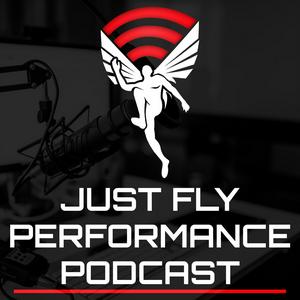466: Stefan Holm on Training Methods of a High Jump Legend
Today’s podcast guest is Stefan Holm—Olympic gold medalist and one of the most elite high jumpers in history. Standing just 5’11”, he cleared over 140 bars at 2.30m or higher, won the 2004 Athens Olympics, and holds an indoor best of 2.40m (co-owning the “height jumped over head world record). Now a coach for Sweden’s national team, Holm brings deep insight into jumping training and performance at the highest level.
On today’s episode, I ask Stefan about his early life as an athlete, and formative sporting experiences, along with the tree of coaching that led to his own training methods. Stefan covers his history with high jump variations, plyometrics, strength training, technique development, and much more on today’s show. As Stefan is now a coach, he also discusses his philosophy based on his time as a world-class competitor. This is not only a great show on training ideas, but also a great opportunity to study one of the best of all time in their given sport discipline.
Today’s episode is brought to you by Hammer Strength and LILA Wearable Resistance Gear.
Use the code “justfly25” for 25% off any Lila Exogen wearable resistance training, including the popular Exogen Calf Sleeves. For this offer, head to Lilateam.com
View more podcast episodes at the podcast homepage. (https://www.just-fly-sports.com/podcast-home/)
Timestamps
4:29- Stefan’s Early Training: Genetics, Childhood Sports, and High Jumping
15:21- Rituals in High Jump Training and Athletic Mastery
26:06- Strength Training and High Jump Performance
40:12- High Jump Training Methods, "Holm Hurdles," and Plyometrics
41:04- Emphasizing the Feeling of Flying in High Jump
52:36- Approach Dynamics in High Jump
1:01:17- Strength Training and Range of Motion Concepts
1:03:32- Gradual Plyometric Progression for High Jumpers
Stefan Holm Quotes
(2:50) "My dream was to be a professional soccer player." - Stefan Holm
(3:00) "We played tennis, we played ice hockey, we tried track and field, we played football. Of course, we just played outside, trying to do everything." - Stefan Holm
(6:50) "I think you can handle a lot, all of you, but I think you have to build it up year by year. I mean, doing these sort of plyometrics that I did at the age of 28, 30, I didn't start there." - Stefan Holm
(9:23) "I started jumping for fun together with my best friend in his backyard when we were like six or seven years old. And we had to do the scissor kick because we had didn't have a mat to land on. We had to land on our feet." - Stefan Holm
(24:45) "But then I starting lifting in the fall of 1995 when I was 19, one and a half years later, I jumped 230 for the first time. So I think that I, when I get used to it, the first six, seven months, that was rough because I, I got muscles that I couldn't control. I got so much stronger and slower and just felt heavy and everything. But after, I mean, six, seven, eight months, but I could get control of everything then. I really think that it, it helped me to jump higher and also to get stable on higher heights. I could do them more often." - Stefan Holm
(27:01) "If I really, really, really wanted to jump a certain height, I jumped until I cleared it. For good and for bad." - Stefan Holm
(37:20) "Whatever everybody sees is these viral clips, me jumping over like 170 hurdles or 150 hurdles or whatever there are. But I mean I. I started off on the usual lower hurdles. That's 107 their tops. And I was doing plenty of jumps as a kid and as a youth jumper as a junior. I didn't buy these high hurdles until I was 24." - Stefan Holm
(41:10) "I had a session when I was jumping over hurdles, different kind of exercises, around 200 jumps in a session. I also did some, some bounding 60 meters. 24 times 16, 24 12. Left, right, left, right, left, right. And yeah, and then six times on your left leg, six times on your right leg. That was a very, very fun morning actually." - Stefan Holm

